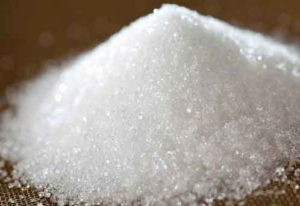Sugar – The most dangerous substance in the country
Tom Vogel presents some information, and helpful tips about how to reduce your intake of that white poison that seems to be everywhere in our food supply. Tom is an Accredited Exercise Physiologist with ESSA and is part of the Health in Balance team located at Elsternwick, Victoria.
Yes, you read that right. In today’s modern Australian society, there are currently unprecedented rises in obesity and type 2 diabetes diagnoses (even amongst young children) and one of the main contributors is an unhealthy consumption of sugar.
Glucose (the scientific name for sugar) is one of the body’s main fuel sources and is essential for human life. However, when we constantly consume large amounts of processed sugar and don’t regularly perform enough physical activity to use this fuel, the body simply cannot process it fast enough. Over a prolonged period of time, this leads to elevated blood glucose levels and insulin resistance – the first step on the path to Type 2 Diabetes.
In Australia it is estimated that 1.7 million people have diabetes, with 500,000 of those cases estimated to be undiagnosed and 85% of these cases Type 2 Diabetes. It is considered to be the fastest growing chronic condition in Australia.
The problem with sugar is that it’s sneaky. It likes to hide itself in your favourite foods. Next time you’re pouring a bowl of breakfast cereal, snacking on a muesli bar or enjoying some low-fat yoghurt take a minute to check the nutritional information on the side of the packaging. If it’s been processed, it’s likely high in sugar.
So what can you do to avoid all this sugar? Here are some things to consider next time you’re at the supermarket:
If it comes in a packet/box it has likely been processed and contains excess sugar. This includes cereals, confectionary, ice creams, flavoured yoghurt, muesli bars, fruit juices, takeaway foods and many more.
Low-fat often equals high-sugar.
Consider other food options – the fresher the better!
Eating a healthy, balanced and nutritious diet by reducing your sugar intake, along with regular exercise can help to lower your blood glucose levels and increase insulin sensitivity, whether you have been diagnosed with diabetes or not.
For more information about Type 2 Diabetes and sugar consumption visit:
For further information, and to find out how a tailored lifestyle plan will assist with your health, fitness, or rehabilitation goals, don’t hesitate to contact Health in Balance on 03 9523 5110.


